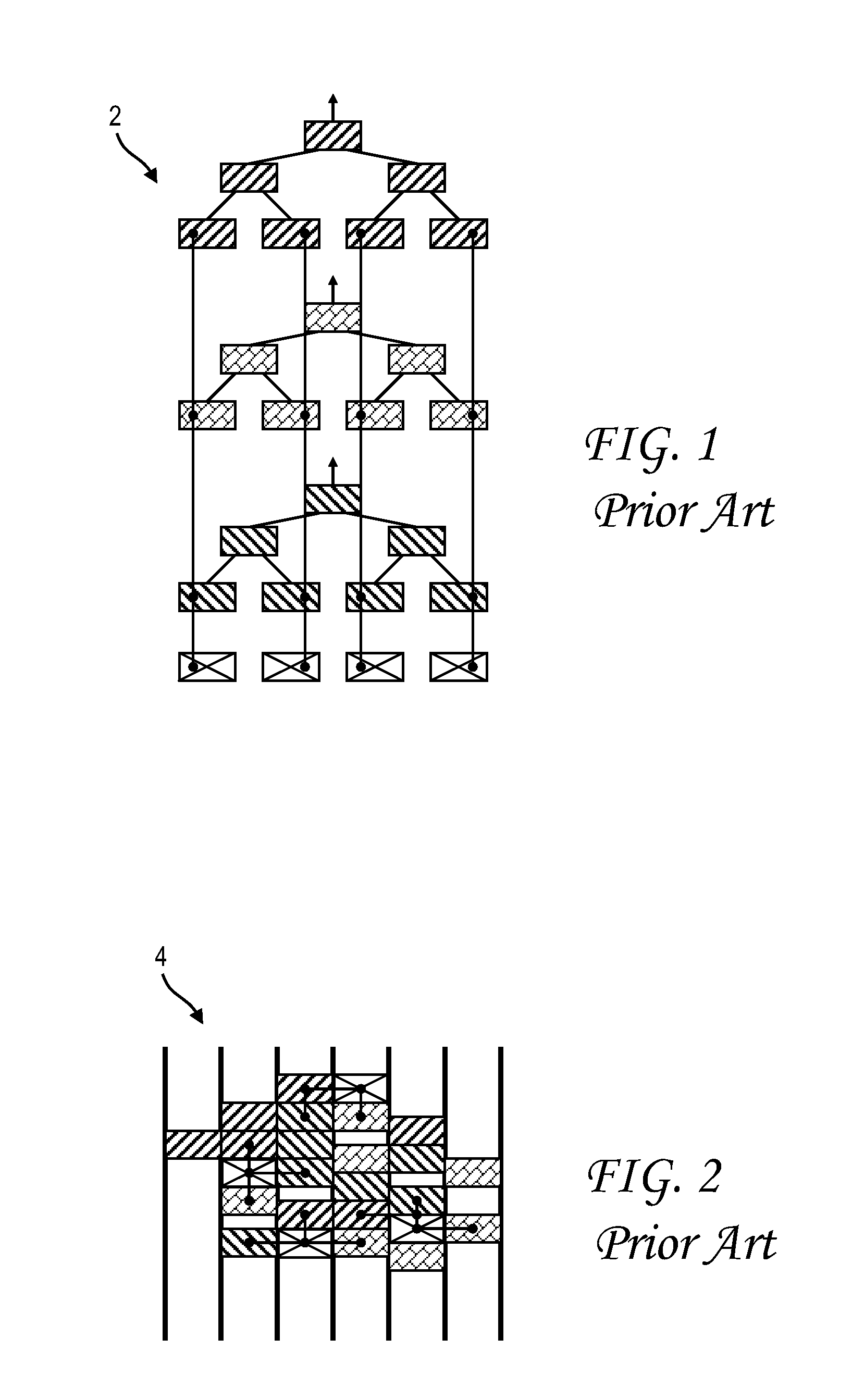Datapath placement using tiered assignment
a datapath and tiered assignment technology, applied in the direction of electric digital data processing, instruments, computing, etc., can solve the problems of large number of cells, difficult physical design without the aid of computers, and complicated connections between cells
- Summary
- Abstract
- Description
- Claims
- Application Information
AI Technical Summary
Benefits of technology
Problems solved by technology
Method used
Image
Examples
Embodiment Construction
)
[0020]As technology scales beyond the deep-submicron regime and operating frequencies increase, a new style is emerging in the design of integrated circuits (semiconductor devices) referred to as hybrid designs, which contain a mixture of random logic and datapath standard cell components. Unfortunately, conventional HPWL-driven placers generally under-perform in terms of regularity and Steiner wirelength for such hybrid designs, and the quality gap between manual placement and automatic placers is more pronounced as the designs become more datapath-oriented.
[0021]Formulation for datapath logic is very different than that for random logic. Random logic placers ignore this aspect of hybrid designs, which can lead to major congestion issues with state-of-the-art devices. This problem may be understood with reference to the exemplary circuit structure 2 seen in FIG. 1. Circuit structure 2 includes four datapaths from four inputs to the datapath cluster as indicated by the vertical lin...
PUM
 Login to View More
Login to View More Abstract
Description
Claims
Application Information
 Login to View More
Login to View More - R&D
- Intellectual Property
- Life Sciences
- Materials
- Tech Scout
- Unparalleled Data Quality
- Higher Quality Content
- 60% Fewer Hallucinations
Browse by: Latest US Patents, China's latest patents, Technical Efficacy Thesaurus, Application Domain, Technology Topic, Popular Technical Reports.
© 2025 PatSnap. All rights reserved.Legal|Privacy policy|Modern Slavery Act Transparency Statement|Sitemap|About US| Contact US: help@patsnap.com



